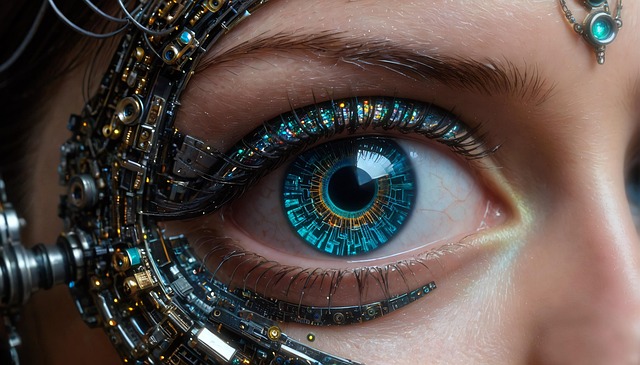The future of personal safety is shaped by a surge in innovative technologies and designs. Emerging safety products leverage advanced materials for superior durability, impact resistance, and comfort, while integrating IoT devices and AI algorithms for real-time hazard detection and adaptation. Key trends include smarter, more adaptive gear tailored to specific activities and environments, enhancing proactive, comprehensive, and accessible personal safety across diverse scenarios, from outdoor adventures to daily routines. This renaissance in safety technology promises a transformative future where protection becomes an integral part of modern life.
The world of personal safety is undergoing a quiet revolution. Future safety trends point towards innovative solutions that go beyond conventional protection. This article delves into the exciting realm of personal safety innovations, exploring how cutting-edge technologies are transforming our approach to staying safe. From emerging safety products to advancements in material science and design, we uncover the future of protection gear: customized, smart, and integrated. Additionally, we highlight personal safety developments that enhance well-being through innovative wearables.
- Future Safety Trends: Unveiling the Next Generation of Personal Protection
- Personal Safety Innovations: Transforming the Way We Stay Safe
- Emerging Safety Products: Exploring Cutting-Edge Technologies for Everyday Use
- Safety Product Technology: Advancements in Materials and Design
- The Future of Protection Gear: Customized, Smart, and Integrated Solutions
- Personal Safety Developments: Enhancing Well-being Through Innovative Wearables
Future Safety Trends: Unveiling the Next Generation of Personal Protection

The future of personal safety is set to be revolutionized by innovative technologies and designs. As we move forward, we’ll see a shift towards smarter and more adaptive protection gear tailored to individual needs. Emerging safety products will incorporate advanced materials that offer superior durability and impact resistance while being lightweight and flexible, ensuring comfort without compromising safety.
Safety product technology is evolving rapidly, with an increased focus on integration of IoT (Internet of Things) devices and AI (Artificial Intelligence). Smart clothing equipped with sensors could detect potential hazards and provide real-time alerts to users, enhancing situational awareness. Moreover, wearable protection gear might utilize AI algorithms to adapt its response based on the specific risks present in a given environment, making it highly effective across diverse scenarios. These developments promise to make personal safety more proactive, comprehensive, and accessible than ever before.
Personal Safety Innovations: Transforming the Way We Stay Safe

Personal safety is an ever-evolving field, and the future holds exciting prospects for transformative innovations. As we move into an era driven by technology, developers are leveraging cutting-edge advancements to create smarter, more efficient personal safety products. The focus is on proactive protection rather than just reactive measures. Emerging safety products are integrating artificial intelligence and machine learning capabilities, enabling devices to anticipate potential hazards and provide real-time warnings. For instance, advanced wearable technology can detect unusual patterns or changes in vital signs, alerting users to possible health risks or impending dangers.
These future safety trends also encompass the development of highly specialized protection gear tailored for specific activities and environments. From smart helmets with integrated AI for cyclists to adaptive clothing that adjusts to changing weather conditions, these innovations aim to provide personalized safety solutions. Safety product technology is becoming more sophisticated, offering enhanced durability, improved comfort, and increased functionality without compromising on style. The future of protection gear looks bright, promising to keep individuals safe while they go about their daily lives or take on new adventures.
Emerging Safety Products: Exploring Cutting-Edge Technologies for Everyday Use

The future of personal safety is being reshaped by cutting-edge technologies that promise to make everyday life safer and more secure. Emerging safety products are leveraging advancements in fields like artificial intelligence, biometrics, and nanotechnology to create innovative solutions that were once confined to science fiction. For instance, smart textiles equipped with sensors can monitor vital signs and detect potential hazards, while advanced materials can absorb and dissipate impact energy in the event of a collision.
These future safety trends extend beyond physical protection gear. Wearable devices are becoming increasingly sophisticated, offering real-time tracking, emergency notifications, and even predictive analytics to anticipate potential risks. Additionally, biometrics technology is transforming how we authenticate ourselves, enhancing security measures and making it easier for individuals to access personalized safety features tailored to their unique needs. Such developments signal a paradigm shift in personal safety, ensuring that the protections of tomorrow are seamlessly integrated into our daily routines.
Safety Product Technology: Advancements in Materials and Design

The future of personal safety is being reshaped by rapid advancements in materials science and design. Emerging safety products are leveraging innovative materials like lightweight yet highly durable composites, offering enhanced protection without compromising comfort or mobility. Nanotechnology is also playing a significant role, enhancing fabrics with self-cleaning properties and even antimicrobial finishes to mitigate health risks associated with outdoor activities.
Designers are incorporating smart sensors and interconnected technology into protection gear, enabling real-time monitoring of vital signs and environmental hazards. These future safety trends extend beyond traditional protective wear, encompassing integrated devices that can detect and alert users about potential dangers, ensuring individuals remain safe in dynamic environments. Personal safety developments prioritize not just physical well-being but also mental peace through advanced stress-mitigation features tailored to the user’s unique needs.
The Future of Protection Gear: Customized, Smart, and Integrated Solutions

The future of personal safety is evolving rapidly, driven by advancements in technology and a growing demand for customized, efficient, and integrated solutions. Emerging safety products are no longer one-size-fits-all; they’re becoming tailored to individual needs and preferences. Wearable technology plays a pivotal role in this transformation, with smart clothing and devices that can monitor vital signs, detect falls or hazards, and even predict potential dangers based on user behavior patterns. This customization ensures that individuals receive the most appropriate level of protection, enhancing their sense of security.
As safety product technology progresses, we can expect to see more seamless integration between various devices and systems. For instance, smart home technology could automatically trigger safety protocols in response to unusual activities detected by connected wearables or sensors. This interconnectedness promises not only improved personal safety but also a more responsive and proactive approach to potential risks. Future safety trends lean towards an integrated ecosystem where protection gear becomes an extension of our daily lives, providing silent yet powerful safeguards.
Personal Safety Developments: Enhancing Well-being Through Innovative Wearables

Personal Safety Developments: Enhancing Well-being Through Innovative Wearables
The future of personal safety is being reshaped by emerging safety product technology, offering unprecedented opportunities to enhance well-being and protection for individuals in various environments. As we look ahead at future safety trends, wearable devices are at the forefront of these developments. These innovative wearables go beyond traditional protection gear and integrate advanced sensors, artificial intelligence, and connectivity to provide proactive monitoring and responsive solutions. From smart clothing that detects environmental hazards to fitness trackers with fall detection capabilities, these technologies promise a new era of personal safety.
Wearable safety devices are designed to cater to diverse needs, from outdoor adventurers and workers in hazardous industries to the elderly living alone. They can alert users and emergency services in case of accidents or unusual activity, providing peace of mind and swift response times. Additionally, they often include features that track vital signs, monitor sleep patterns, and offer health insights, promoting proactive wellness management alongside safety. As these personal safety innovations continue to evolve, they are set to redefine how individuals stay protected and healthy in the future.






